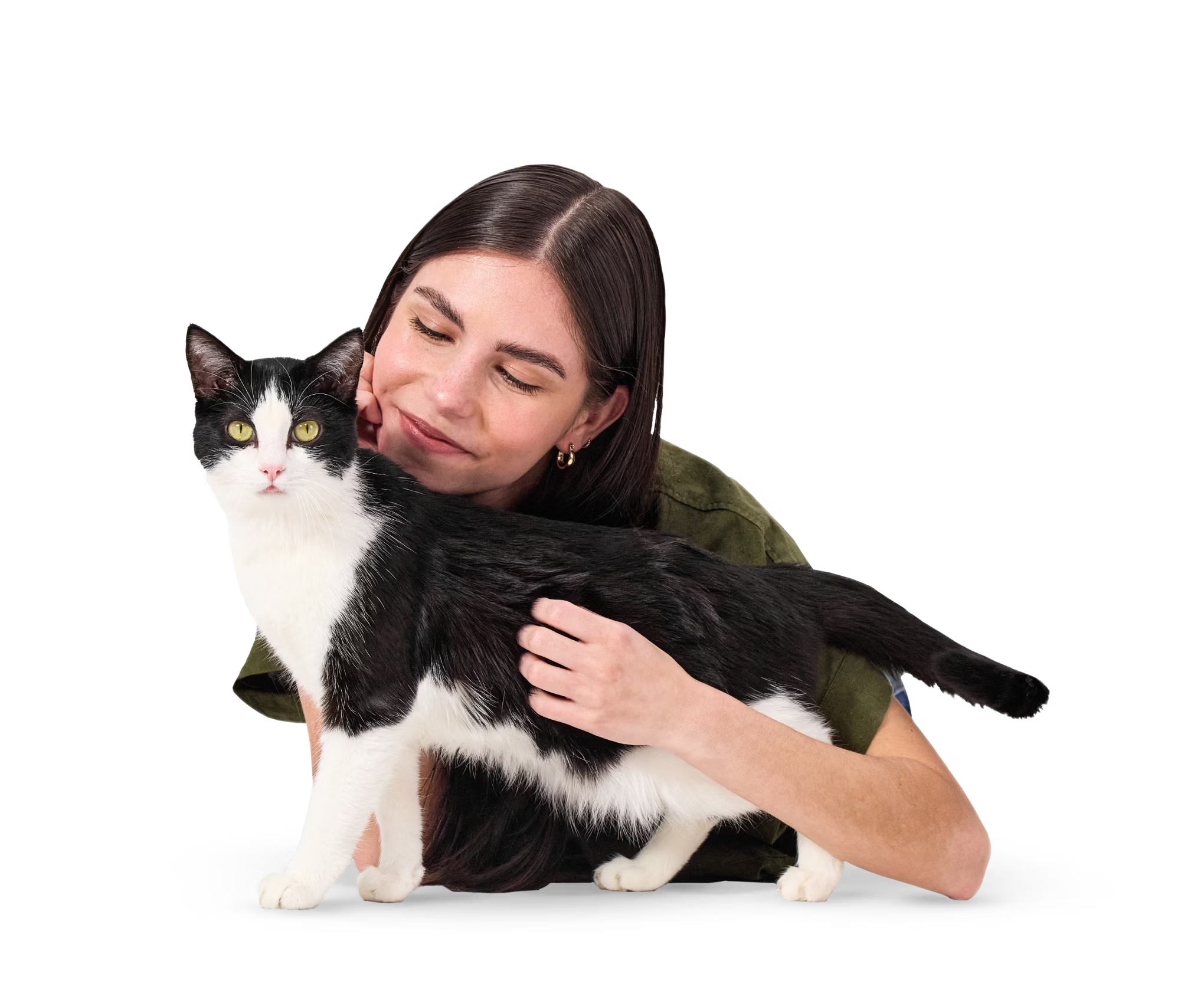Hemophilia B (Variant 1)
Hemophilia B, or Factor IX Deficiency, is a blood clotting disorder that can result in tiredness, decreased appetite, fever, lameness, and prolonged bleeding times after injury, trauma or surgery.
Key Signs
Lethargy, Inappetence, Fever, Lameness, Hematomas, Bruising, Prolonged bleeding after trauma or surgery
Age of Onset
At birth
Present at birth
Inheritance
X-linked Recessive
For X-linked recessive disorders, the genetic variant is found on the X chromosome. Female cats must have two copies of the variant to be at risk of developing the condition, whereas male cats only need one copy to be at risk. Males and females with any copies of the variant may pass the disorder-associated variant to their kittens if bred.
Likelihood of the Condition
Moderate likelihood
At risk cats may show signs of this disease in their lifetime, although some will not develop the condition due to absence of additional risk factors.
What to Do
Here’s how to care for a cat with Hemophilia B
Partner with your veterinarian to make a plan regarding your cat’s well-being, including any insights provided through genetic testing. If your pet is at risk or is showing signs of this disorder, then the first step is to speak with your veterinarian.
For Veterinarians
Here’s what a vet needs to know about Hemophilia B
Blood coagulation is a complex process. Factor IX is one of the proteins necessary for blood coagulation and its deficiency causes Hemophilia B in an affected cat. Hemophilia B is clinically indistinguishable from Hemophilia A, and in some individuals may cause life-threatening bleeding. The disease follows an X-linked mode of inheritance. Given males only have one X chromosome, the condition is seen more commonly in males as a single copy of the mutation will cause the condition; while females require two copies of the mutation in order to exhibit the condition. Clinical signs of the disease are often noticeable before one year of age and include intermittent lethargy, anorexia, and fever. Affected cats can show prolonged bleeding after trauma or surgical intervention. Lameness and signs of pain may occur due to bleeding inside joints and other tissues. Swelling and bruising under the skin may be observed. Depending on severity, anemia may also occur due to the loss of blood, contributing to weakness, shortness of breath, and irregular heartbeats.
Therapy is limited to supportive care (which can include transfusions if needed) and avoiding surgery when appropriate. When necessary, antifibrinolytic agents (medication promoting blood clotting) should be considered. Affected cats should be monitored closely during and after any required surgical procedure or following any trauma. Owners of affected cats can provide a lifestyle favorable towards reducing risk of trauma and injury to their cat, such as limiting opportunities for falls or for getting into fights, and maintaining good dental hygiene to avoid excessive gum bleeding.
For Breeders
Planning to breed a cat with this genetic variant?
There are many responsibilities to consider when breeding cats. Regardless of test results it is important that your cat is in good general health and that you are in a position to care for the kittens if new responsible owners are not found. For first time or novice breeders, advice can be found at most cat registry websites.
This disorder is X-linked recessive, meaning the genetic variant is found on the X chromosome. Given males only have one X chromosome, a single affected copy will increase the risk of being diagnosed with the disorder. Females typically require two copies to be at an elevated risk. Use of cats with one or two copies of the variant is not recommended for breeding as there is a risk that the resulting litter will contain affected kittens. Please note: It is possible that clinical signs similar to the ones caused by this variant could develop due to a different genetic or clinical cause.
Technical Details
| Gene | F9 |
|---|---|
| Variant | C>T |
| Chromosome | X |
| Coordinate | 117,111,577 |
All coordinates reference FelCat9.0
We’ve spent the past 20+ years devoted to DNA. Our team of scientists and vets have spent decades developing the most accurate pet DNA test. Because every pet deserves to have their whole story told. We’ve collaborated with leading academic institutions, innovative research labs, and Banfield Pet Hospital™ to make our process exceptionally precise, fast, and affordable.

References & Credit
Credit to our scientific colleagues:
Goree, M., Catalfamo, J. L., Aber, S., & Boudreaux, M. K. (2005). Characterization of the Mutations Causing Hemophilia B in 2 Domestic Cats. In J Vet Intern Med (Vol. 19). View the article19<200:cotmch>2.0.co;2, https://doi.org/10.1892/0891-6640(2005)19<200:cotmch>2.0.co;2)